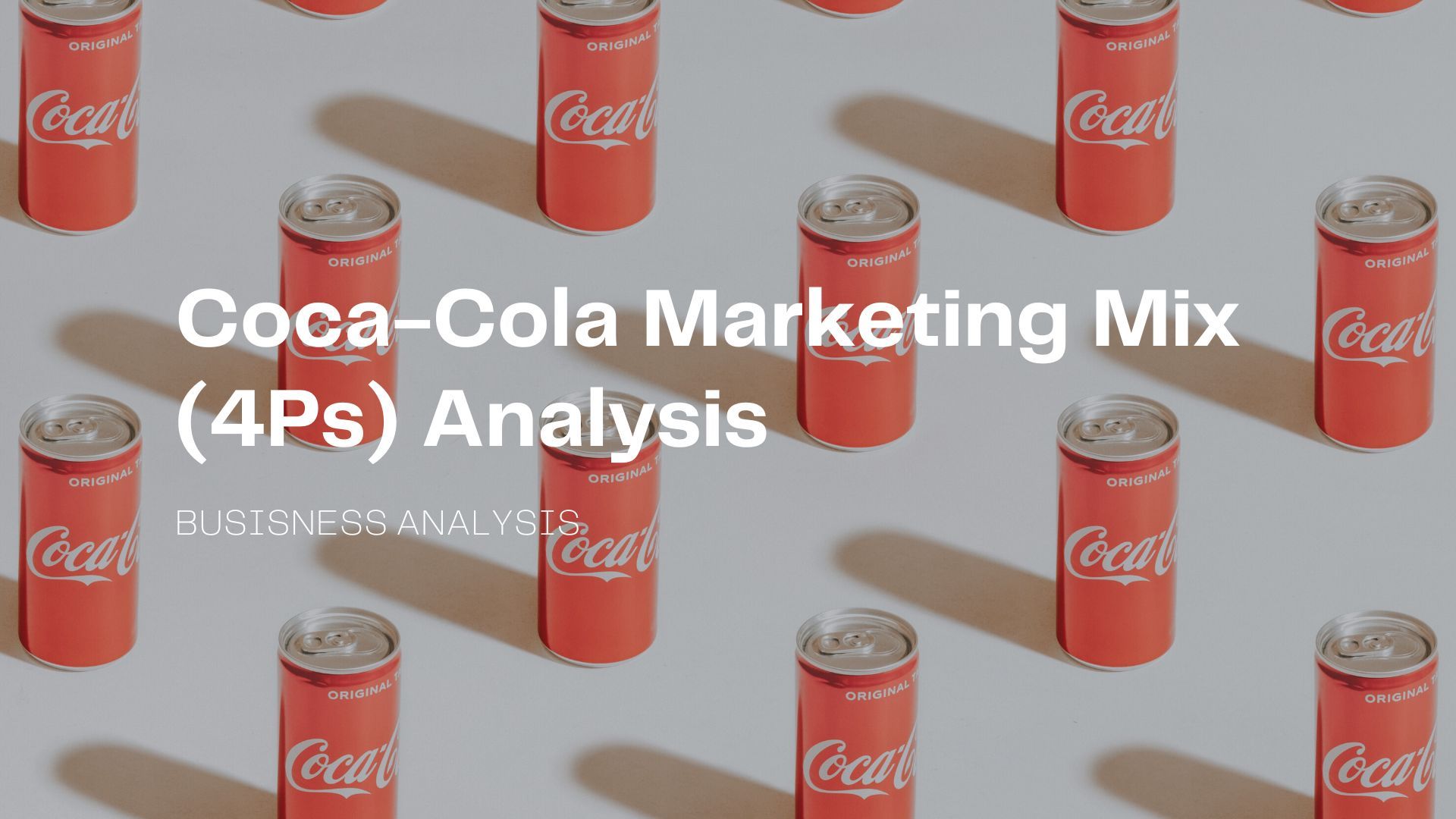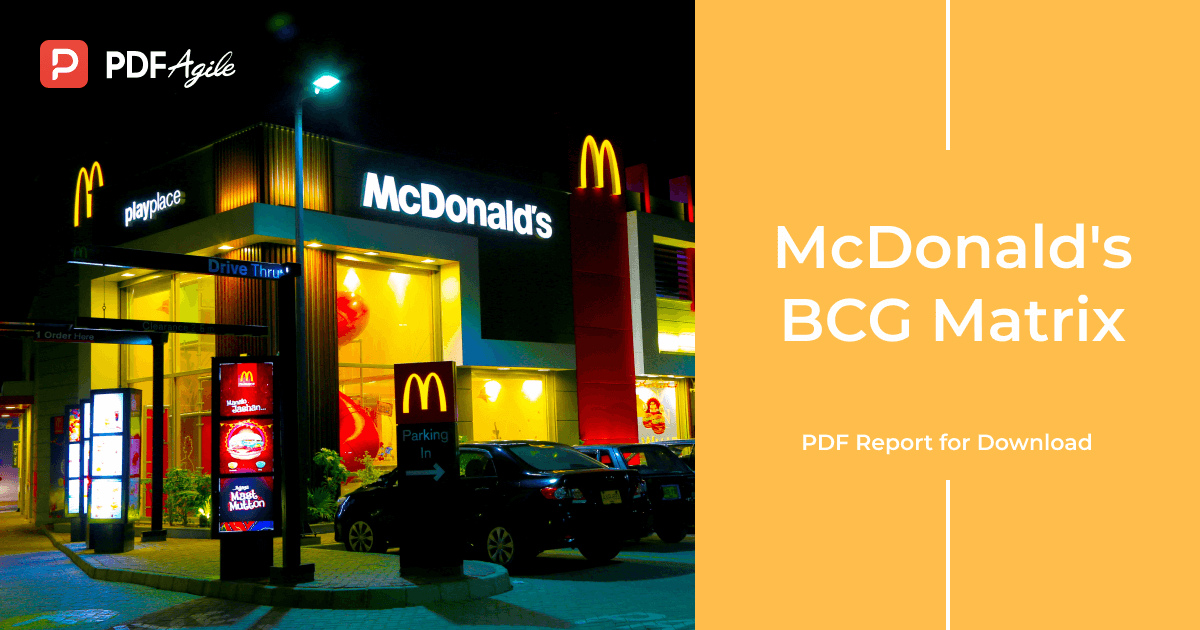Introduction
In the world of multibillion soft drink companies, Coca-Cola boasts the highest brand equity. The company has scaled to this height through many pitfalls using strategic wins. It all comes down to the marketing mix employed by the global giant. Coca-Cola's Marketing Mix has become so diversified over time through the addition of numerous products. Currently, Coca-Cola has over 200 products and trades in numerous markets.
The company first started as a syrup on My 8, 1886, in Atlanta, Georgia. At its inception, the syrup was mixed with carbonated water to form Coca-Cola and retailed at five cents.
Let us take a look at the Marketing Mix elements that have propelled Coca-Cola to these great heights.
Coca-Cola Marketing Mix: Product
Coca-Cola has numerous products under its name in its massive portfolio. The company has diversified into numerous categories of beverages. These beverages include the trademark Coca-Cola beverages plus fruit drinks, drinking water, tea and coffees, and even energy drinks. In 2010, Nielson's assessment ranked Coca-Cola as the Number one brand in retail packaged water, 100% fruit juice, and assorted beverages.
The products are so diverse, with the main ones being Sprite, Fanta, Dasani, and Coca-Cola. Most of the diversified products are made as a response to customer demands. Given the rising appeal of public health awareness, Coca-Cola has come up with healthy drinks such as diet cola and caffeine-free drinks. The products even come in different shapes and an array of sizes. Customers just choose from the multiple options.
The different product offerings have made Coca Cola make about 1.9 billion sales per day and acquire a market share of about 43.7 percent in the United States (Statista, 2019)
Coca-Cola Marketing Mix: Price
The marketing mix of Coca-Cola is structured according to a pricing approach known as price discrimination. Price discrimination is the technique where fairly similar products retail at different prices in different markets, all by the same provider. Coca-Cola has used price discrimination to target different markets. This has been helped by the fact that the beverage market is an oligopoly where there are small producers and many customers.
Coca-Cola has adopted this segmented pricing strategy based on the geography and needs of a given market. Where several products are being offered, Coca-Cola sets its price according to the market demands and the market segmentation. How does this strategy work? For each sub-brand product, Coca-Cola sets a diversified pricing system. Majorly, the price is aligned according to the price of competitors.
In areas where customers are price-sensitive because of many competing beverages, Coca-Cola aligns its price with acquiring a market share. This price parity is a form of price discrimination. Most competitors have not been able to sell their products at the low prices set up by Coca-Cola. As a result, most competitors have run aground, leaving Coca Coal unchallenged. Once this happens, Coca-Cola repositions itself as a premium brand through various promotions and restructures the price to profitable margins.
Coca Cola outstanding pricing strategy has established the company as a dominant beverage company. Almost reaching monopoly levels in some markets.
Coca-Cola Marketing Mix: Place
Coca-Cola has adopted a strategy that places it as the most preferred brand all over the world. The main contributor to this success has been the exemplary distribution system. Coca Cola distribution system is aligned according to the FMCG
distribution network. At the apex of the channel, Coca-Cola sells its beverages to canning and bottling industries, channels of wholesale distributors, and retailers. The channels go on to distribute the beverage to fellow retailers, like gas stations, convenience stores, supermarkets, and hotels.
Coca-Cola's channels of distribution are among the best planned and executed when compared to other beverage companies. The effect is so staggering on its loyal customers that even wholesale distributors and retailers need the product for their business to run smoothly. This is because Coca-Cola has a number one position in the minds of consumers. The place strategy ensures high visibility and makes Coca-Cola available all over the world, even in dense rural areas.
An analysis of Coca Cola distribution strategy and positioning shows that it has eliminated the middlemen and small level players. This has given the company a staggering market share and dominance in the market.
Coca-Cola Marketing Mix: Promotion
Promoting a company is necessary given the number of competitors and the unstable shift in customer needs and demand. Coca-Cola has adopted an extensive strategy to promote itself in the minds of consumers. The promotion strategy has involved extensive advertising using billboards, value-based advertising, video scripts of happy people drinking the Coca-Cola brand, and promotional games. This has been geared towards increasing loyalty and demand in the market.
Coca-Cola has promoted its picture in the minds of the consumer by using values and brand image. Some advertisements have been personalized. An example is a personalized festival like the Fifa World Cup that carries an engaging message of Coca-Cola. Coca-Cola aims to dictate the behavior and lifestyle of buyers using these techniques. This is seen in the use of pop idols like Selena Gomez to promote the brand to more audiences.
Coca Cola Corporate Social Responsibility (CSR) has been used for the promotion of the brand. Ideally, CSR involves environmental protection, philanthropic acts, ethical decisions, and economic responsibility. Coca-Cola has adopted CSR through initiatives that protect and preserve the environment. This involves recycling bottles, efficient use of water, reducing its carbon emissions and carbon footprint, and effective waste collection.
The promotion has been a major theme in Coca-Cola's Marketing mix. The company has employed targeted price discounts and subsidies to trusted dealers and wholesalers. This type of sales promotion has pushed more products to different customers in diverse markets. Promotions are a push strategy, while active campaigns and advertisements are the counter attractive pull mechanism
Coca-Cola Marketing Mix (4Ps) Analysis Mind Map
Coca-Cola's Marketing Mix mind map is very detailed.
The first part details the marketing mix and proceeds to subdivide it into the four 4ps, which are Products, Pricing, Place, and promotion. The follow-up details each P of the 4Ps.and puts these factors in detailed perspective.
Key Takeaways
Coca-Cola has grown to have a dominant market share through having a perfect marketing mix approach. The company has used the 4Ps of product, place, promotion, and price to place itself as the leader of all global beverage companies. Each of these variables has been strategized to form an exquisite marketing mix. The first P is products, and it shows how Coca-Cola has developed numerous products for various markets and customers. The second P is price, and it shows how Coca-Cola has used price discrimination to be competitive in the market. The third P is Promotion, and it shows the Corporate social responsibility initiatives, advertising, and promotional strategies used by the giant Coca-Cola company. The last P is pace, and it shows the FMCG distribution strategy used by Coca-Cola.
The marketing mix used in Coca-Cola is not only applicable to top-tier beverage companies. The marketing mix can also be applied in start-up companies and is a strategy for marked success.
Coca-Cola Inc's Marketing Mix report details the 4P's marketing approach used by Coca-Cola. The report details the application of the pricing, placing, promotion, and product diversification strategies. It shows these elements are incorporated by Coca-Cola.
Download the Report in PDF
It is an advantage to organize all your PDF work like the document above using the preferred PDF mapping software, PDF Agile. PDF Agile software is a user-friendly PDF-making tool that offers a complete and affordable solution for all your PDF needs. It has a user-friendly interface that is user-friendly and effective.
References
Marketing mix of Coca Cola – Coca-Cola marketing mix https://www.marketing91.com/marketing-mix-coca-cola/
The Coca-Cola Company's distribution strategy https://mpk732.wordpress.com/2015/05/17/the-coca-cola-companys-distribution-strategy/
What You Need to Know About Coca-Cola's Social Responsibility https://studybay.com/blog/corporate-social-responsibility-in-the-coca-cola/#:~:text=They%20have%20a%20range%20of,the%20right%20thing%20to%20do.
Coca Cola Marketing Strategy, Plan & Mix (4Ps) https://thestrategystory.com/2021/08/27/coca-cola-marketing-strategy-plan-mix/
Marketing Mix of Coca-Cola – Coca Cola Marketing mix https://howandwhat.net/marketing-mix-coca-cola-coca-cola-marketing-mix/
Coca-Cola Company's market share in the United States from 2004 to 2020 https://www.statista.com/statistics/225388/us-market-share-of-the-coca-cola-company-since-2004/#:~:text=In%202019%2C%20Coca%2DCola' s%20U.S.,shares%20may%20be%20found%20here.
Coca-Cola Marketing Mix (4Ps) Analysis https://www.edrawmind.com/article/coca-cola-marketing-mix-analysis.html





